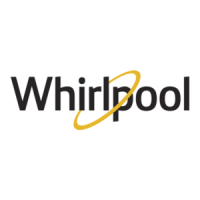What to do if my Whirlpool AWM 6100 Washer won't start and no lights come on?
- TTammy RobinsonAug 17, 2025
If your Whirlpool Washer isn't starting and no lights are on, make sure the mains plug is properly inserted into the socket. Also, check if the wall socket is working by testing it with a table lamp. Ensure that you've selected a program correctly and that you've pressed the 'On/Off' button if your model has one.

